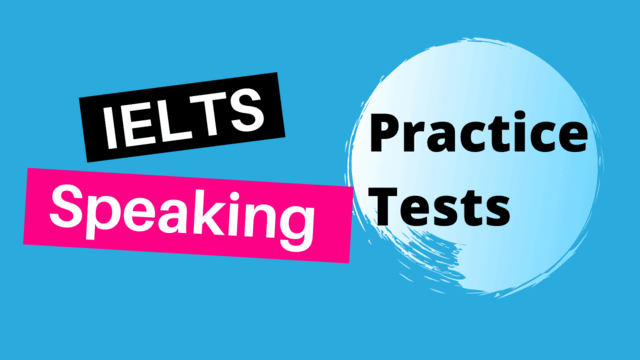In the IELTS Speaking test, your ability to communicate clearly and effectively in English is assessed through three parts: Part 1 (Introduction and Interview), Part 2 (Long Turn), and Part 3 (Discussion). Colour is an interesting and engaging topic that explores your personal preferences, as well as the meanings, psychology, and impact of colors in daily life and culture. Here’s a sample test on Colour, complete with questions and answers, along with tips to help you score high in the IELTS Speaking test.

Part 1: Introduction and Interview
- Question: What is your favorite color, and why?
- Answer: My favorite color is blue because it feels calming and reminds me of the ocean. I find it peaceful, and it helps me relax. I often choose blue for clothing and home decor because of its soothing effect.
- Question: Do you think colors can affect your mood?
- Answer: Yes, definitely. I think bright colors like yellow and orange can lift my spirits, while darker colors like gray can sometimes make me feel a bit down. Colors have a psychological impact that influences how we feel.
- Question: How do you decide on the colors of your clothes?
- Answer: I usually choose colors that match my mood or the season. For instance, I prefer lighter colors in the summer and darker shades in the winter. I also try to pick colors that suit my skin tone.
- Question: Has the Internet influenced the way people use colors in fashion or design?
- Answer: Yes, the Internet has made it easy for people to follow global color trends and get inspired by designs from around the world. Social media platforms often set trends in fashion and design, showing people how to use colors creatively.
Part 2: Long Turn
- Question: Describe a time when you chose a color for something important. You should say:
- what the color was
- what you chose it for
- why you chose it
- and explain how you felt about the choice.
- Answer: I remember choosing a pale green color for my bedroom walls. I chose it because green is associated with nature and relaxation, and I wanted a peaceful environment to unwind after a long day. The choice felt perfect because it made the room feel fresh and calming, and I still enjoy the color every time I step in.
Part 3: Discussion
- Question: Do you think people’s color preferences change as they grow older?
- Answer: Yes, I think so. As people age, their color preferences often change based on their experiences, lifestyle, or even their tastes. For instance, many young people prefer bold, vibrant colors, while older individuals might opt for more neutral or calming tones.
- Question: How important are colors in branding and advertising?
- Answer: Colors are essential in branding and advertising because they can create a strong impression and convey a brand’s identity. For example, red is often used for energy and excitement, while blue is used to convey trust and reliability. The right color choice can influence consumer perceptions and emotions.
- Question: Do you think the meaning of colors differs from culture to culture?
- Answer: Yes, colors hold different meanings in various cultures. For instance, white is often associated with purity in Western cultures, but in some Eastern cultures, it symbolizes mourning. Similarly, red can represent good luck in some places, while in others, it can signify danger.
- Question: How has technology changed the way we perceive colors?
- Answer: Technology has expanded the range of colors we can see and use, especially with digital displays that can show millions of shades. Digital design tools allow people to experiment with color combinations that might not exist in nature, changing how we perceive and interact with color.
- Question: Do you think colors have a practical impact on daily life, such as in traffic or safety signs?
- Answer: Absolutely. Colors are used strategically in traffic and safety signs to convey important messages quickly. Red, for example, signals stop or danger, while green often indicates safety or permission to go. These associations help people react quickly, making our environment safer.
Tips for Scoring High in IELTS Speaking
- Master Pronunciation and Intonation
Speak clearly, with natural intonation and emphasis on key words. Practice varying your tone to sound expressive and engaging, especially when describing personal preferences. - Use Rich Vocabulary Related to Colors
Use a range of vocabulary such as “soothing,” “vibrant,” “neutral,” “calming,” “energetic,” “pastel,” and “saturated” to describe colors and their impact. This shows the examiner your ability to express detailed ideas. - Structure Responses Logically
Organize your answers by introducing the main idea, providing examples, and concluding if appropriate. This will help examiners follow your thoughts easily and demonstrate coherence in your speaking. - Showcase a Range of Sentence Structures
Try using a variety of sentence types, including complex sentences, conditionals (“If people are exposed to bright colors, it might make them feel more energetic”), and comparisons (“Red is bolder than blue”). This adds depth to your responses and shows your grammatical range. - Stay Fluent and Confident
Speak at a steady pace and avoid long pauses. If you need a moment to think, use filler phrases like “Let me think about that” or “That’s an interesting question.” Practicing color-related topics in advance will help you answer smoothly and confidently.
By practicing these tips and familiarizing yourself with sample questions on colors, you’ll improve your vocabulary, structure, and fluency. Being well-prepared is key to achieving a high score in the IELTS Speaking test. Good luck!
